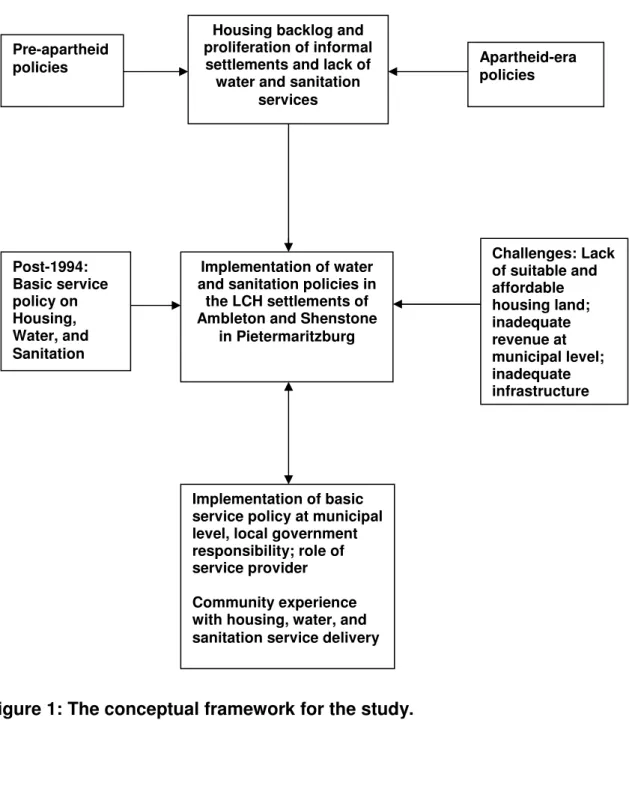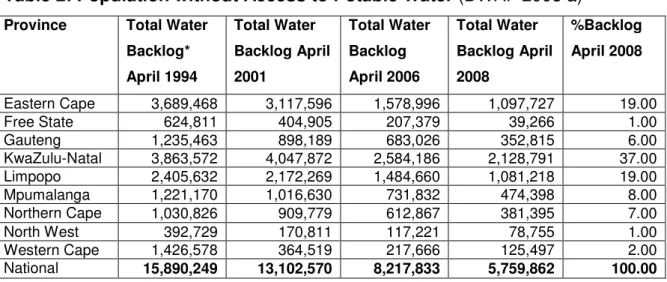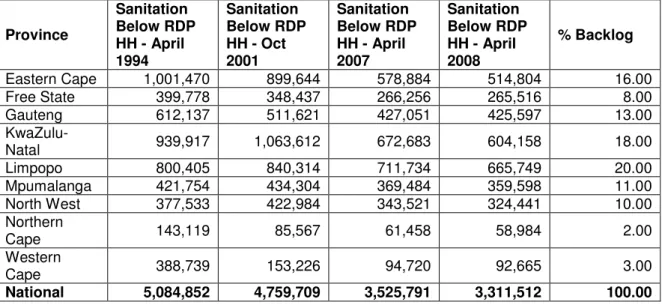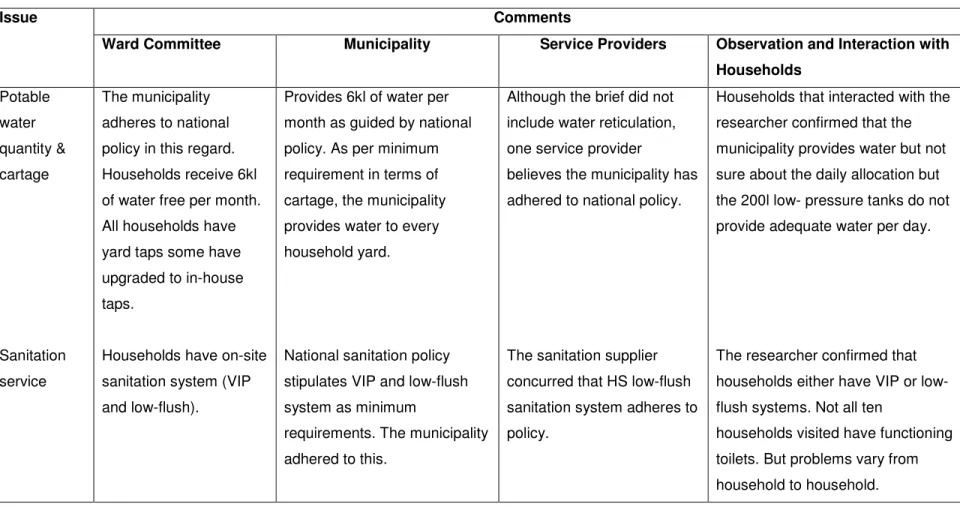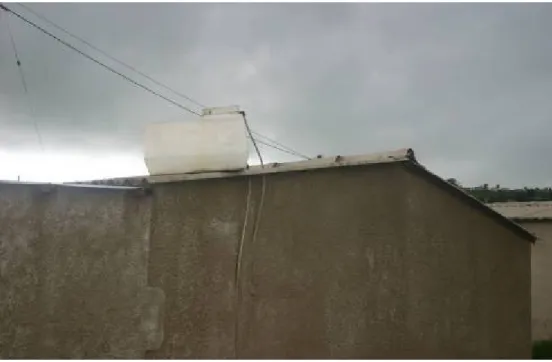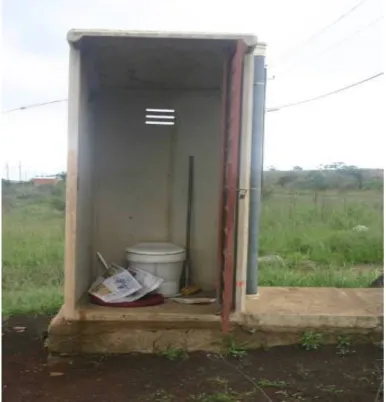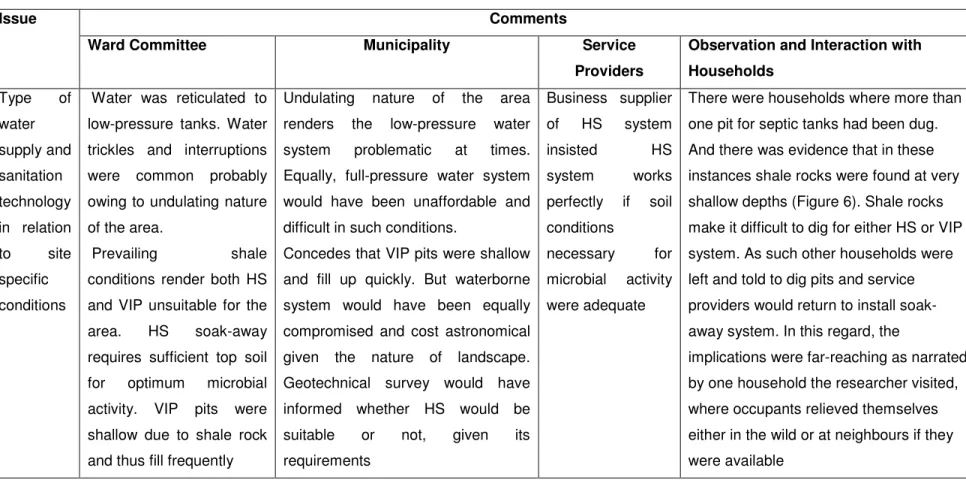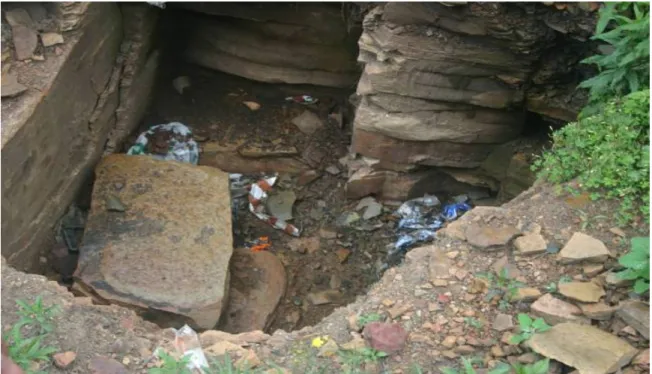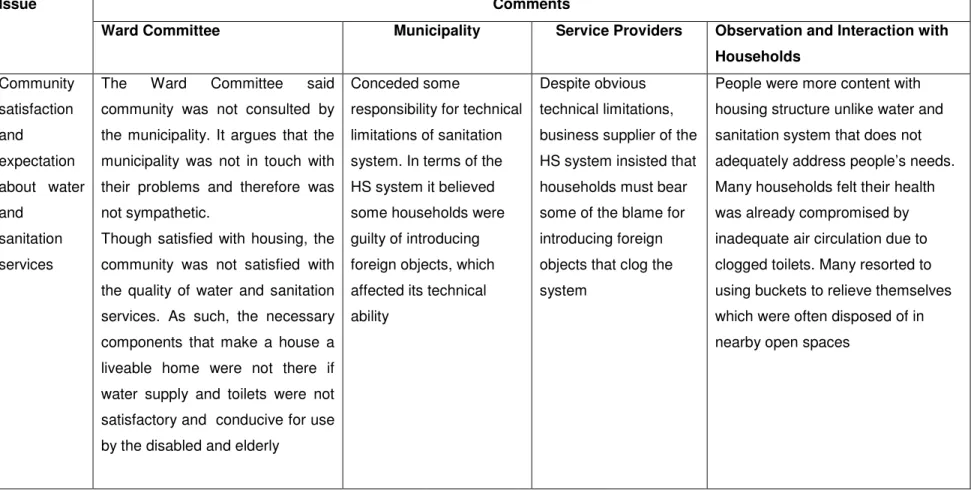The post-apartheid government was involved in the process of providing formal housing, water and sanitation services to the poor. The main challenge is related to the fragmentation of the financing mechanism for housing and physical infrastructure, especially water and sanitation infrastructure. Concerns were raised about the ability of local government to provide suitable land and quality physical infrastructure, which were prerequisites for sustainable settlements.
The purpose of the study was to evaluate the implementation of water and sanitation policies in a low-cost housing (LCH) development in Ambleton and Ambleton Extension in Pietermaritzburg. The results of the survey showed that there were challenges with water and sanitation services. Some of the challenges relate to the inconsistent and fragmented nature of the funding mechanism inherent in basic service delivery policies.
Residents of Ambleton and Ambleton Extension were generally dissatisfied with the quality of water and sanitation services. The work was carried out under the supervision of Professor Robert Fincham and co-supervision of Miss Mary Lawhon of the Center for Environment, Agriculture and Development, Pietermaritzburg.
Introduction 1
- Problem Statement 6
- Research Question 7
- Aim and Objectives of the Study 7
- Structure of Dissertation 7
2 Pottie 2003), which lacked adequate water and sanitation facilities (Centre for Scientific and Industrial Research (CSIR) 1999). There were approximately 15 and 20 million people who did not have access to potable water and sanitation services respectively (Campbell 2001; Pottie 2003). Recent statistics indicate that the number of people who have access to water and sanitation services has increased significantly.
The provision of physical infrastructure, especially drinking water and sanitation services, led to improved health of urban residents. Therefore, the purpose of this study was to assess the implementation of water and sanitation policies in an LCH settlement of Ambleton and Ambleton Extension located in Msunduzi Municipality (referred to as France by locals). Assess whether or not the water and sanitation technology was appropriate in relation to the specific conditions of the area;.
Verify whether the community's expectations were aligned with water and sanitation policy provisions; and. The research field visit involved different stakeholders in the study area getting different perspectives on the provision of water and sanitation services.
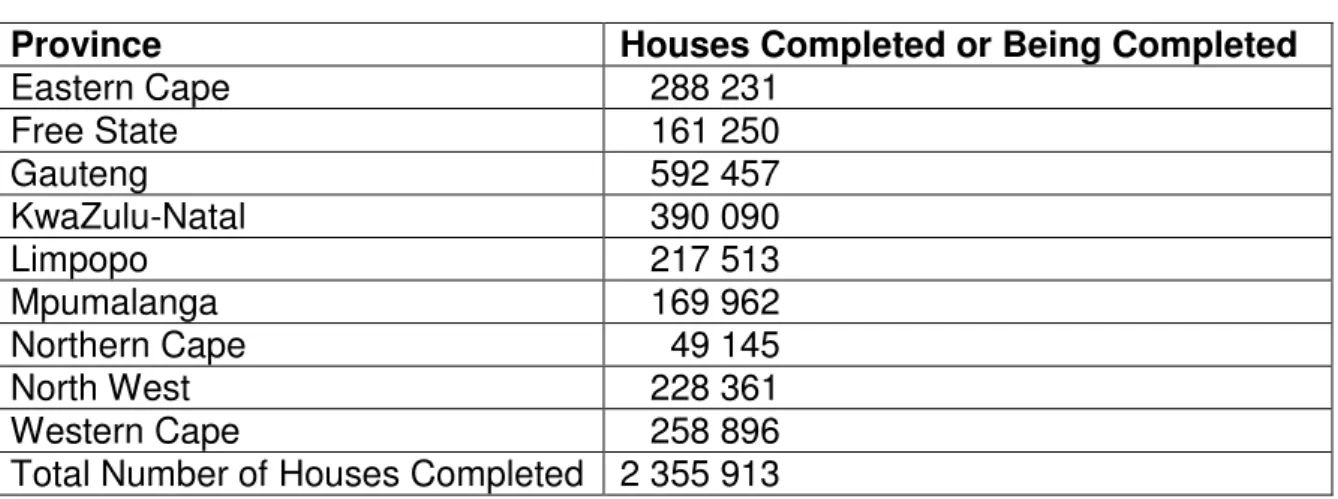
Introduction 9
Housing Policy Evolution 11
- The Current Housing Policy 13
Historical Background to Water Policy in South Africa 14
- The Current National Water Policy 15
The primary use of water in the country was dedicated to irrigation of agricultural land and mining sector (Bond et al. 1994). In such cases very little consideration has been given to consumption patterns, often because users have no sense of ownership and responsibility (Wood et al. 2001). In such cases, excessive consumption levels could be curtailed and users were more likely to report leaks when detected (Wood et al. 2001).
The FBW policy included a so-called 'lifeline' of 6kl of water per household per month (DWAF 2001; Peters and Oldfied 2005). The municipality was allowed to use restrictive devices to limit water consumption to its preferred amount of water per month (Hall et al. 2006). The national government was tasked with developing national guidelines to ensure consistency in the formula that municipalities follow to determine the appropriate rates for different services (Wood et al. 2001).
The minimum recommended water requirement for households in terms of the Water Services Act, Law 108 of 1997 was 25 l per capita per day, within 200 m of households which translates to 6 kl per household per month (Ward et al. A such water distribution was considered to be sufficient to meet health and basic needs (MacKay and Ashton 2004; Hall et al. 2006).
Historical Background to Sanitation Policy in South Africa 17
- The Current National Sanitation Policy 18
For example, the guidelines for setting solid waste rates for local governments were intended to ensure that municipal waste rates were consistent with the provisions of the Act and other applicable legislation to prevent unfair discrimination (DEAT 2002). In this regard, if household consumption exceeded the observed basic requirement (6kl), they were subject to an increasing block rate that was steep for poor households (Ralo et al. 2000). Lack of political legitimacy and willpower often meant that mainland governments did not make resources available to the “homelands” where they were most needed (Funke et al. 2007).
The new political dispensation ushered in a reorientation of the national policy on sanitation based on an integrated approach. There was an understanding that improved quality of life could be realized through an integrated approach that emphasized other important sanitation aspects such as good hygiene practices (Obi et al. 2006). A free basic sanitation policy consistent with the FBW policy was needed to ensure that sanitation tariffs were integrated into the water supply (DWAF 2002 b).
Many were often reluctant to provide an on-site plumbing system, believing such a system to be inferior. Inadequate maintenance of existing sanitary facilities has largely contributed to sewage problems, exacerbating the problems (Venter et al. 2004).
Creating Sustainable Settlements 21
21 Against the background of the current challenges encountered in the provision of sanitation services, the government has set an optimistic target to eliminate the lack of sanitation services by 2010. With the current estimate of 3 million households without access to adequate sanitation services, it is intended to be an insurmountable task to eradicate this backlog by 2010 (DWAF 2008b). 22 After the Rio Summit, the United Nations held the Second Conference on Human Settlements (Habitat II) which aimed to address the issue of sustainable human settlements.
It described a sustainable human settlement as one that offers adequate shelter, basic services and access to employment in a safe environment. The objectives of Habitat Agenda II were enshrined in South Africa's constitution and all legislative documents (Huchzermeyer 2001; Gwebu 2003). While South Africa has committed to the principles of sustainable development, the country has not applied these principles to the development of the LCH.
Integrating Housing, Water, and Sanitation Services 22
Therefore, the objective of the study was to investigate the implementation of water and sanitation policies in the LCH settlement. Therefore, the economic status of the community and municipality dictated that the area's survival system was an on-site sanitation system. The Ward Committee was therefore in a good position to gauge the sentiments of the community better.
One such topic, the subject of this study, was the evaluation of the implementation of water and sanitation services in an LCH settlement, namely Ambleton and Ambleton Extension. Nevertheless, the ward committee argued that the Msunduzi Municipality needed to be flexible in implementing the FBW policy. This depended on the nature of the land to be developed, the municipality argued.
In addition, the majority of ward committee members admitted that their knowledge of water and sanitation policy was limited. It claimed that it endeavored to inform the council of the challenges and concerns of the people of Ambleton and Ambleton Extension. The municipality acknowledged the extent of the problems and admitted that the matter could have been handled better (Penighedsudvalget's personal communication 2005).
76 the necessary financial muscle to meet the wishes of the people of Ambleton and Ambleton Extension. The development of Ambleton and Ambleton Extension represented an example of the council's conservative approach to limiting spending on infrastructure. The results of the survey showed that there was frustration with the water and sanitation services.
84 The Msunduzi Municipality understood the plight and the economic circumstances of the affected households in the area. They were often accused of not properly presenting community grievances to the Municipality. The Ward Committee recognized that the grievances of the community were right and that their expectations of the Municipality were justified.
The situation was worsened by the reluctance of the municipality to directly involve the community. Water and sanitation services in Ambleton and Ambleton Extension were in compliance with the basic service standards of the relevant policies. Evaluating the Implementation of Water Supply and Sanitation Services for a Residential On-Site Upgrade Project: A Case Study of Newtown,.
Evaluation of the implementation of water and sanitation policies in a low-cost housing settlement of Ambleton and Ambleton Extension in.
